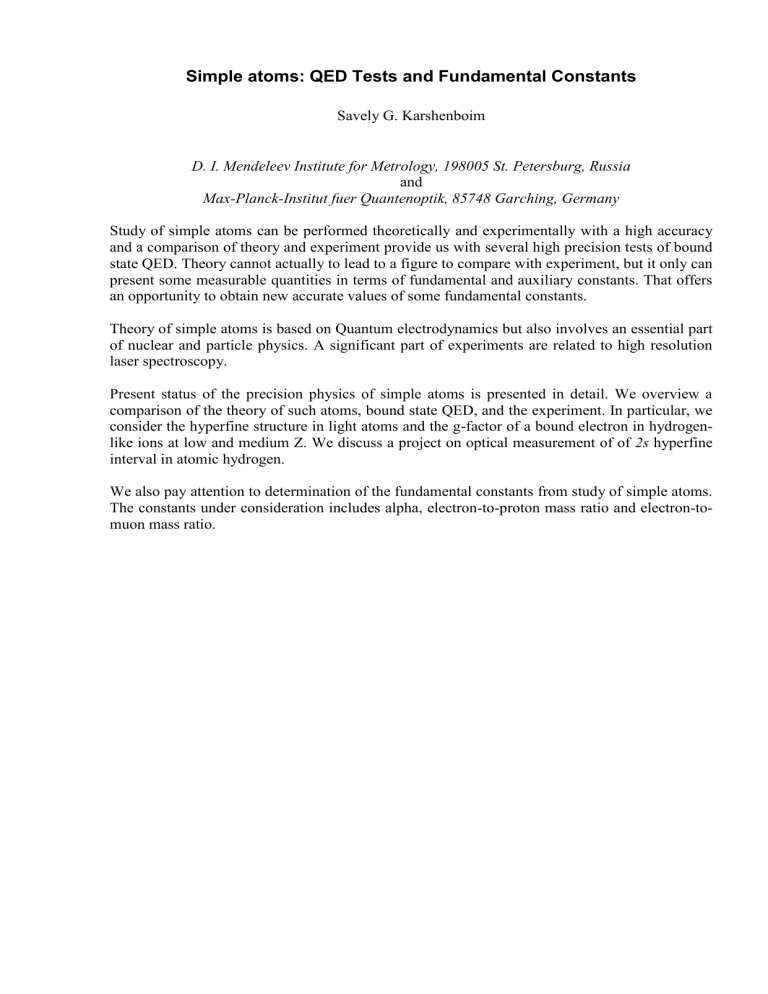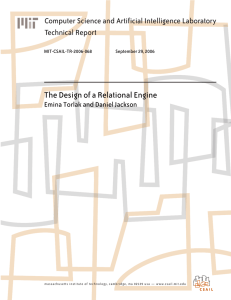Simple atoms: QED Tests and Fundamental Constants

Simple atoms: QED Tests and Fundamental Constants
Savely G. Karshenboim
D. I. Mendeleev Institute for Metrology, 198005 St. Petersburg, Russia and
Max-Planck-Institut fuer Quantenoptik, 85748 Garching, Germany
Study of simple atoms can be performed theoretically and experimentally with a high accuracy and a comparison of theory and experiment provide us with several high precision tests of bound state QED. Theory cannot actually to lead to a figure to compare with experiment, but it only can present some measurable quantities in terms of fundamental and auxiliary constants. That offers an opportunity to obtain new accurate values of some fundamental constants.
Theory of simple atoms is based on Quantum electrodynamics but also involves an essential part of nuclear and particle physics. A significant part of experiments are related to high resolution laser spectroscopy.
Present status of the precision physics of simple atoms is presented in detail. We overview a comparison of the theory of such atoms, bound state QED, and the experiment. In particular, we consider the hyperfine structure in light atoms and the g-factor of a bound electron in hydrogenlike ions at low and medium Z. We discuss a project on optical measurement of of 2s hyperfine interval in atomic hydrogen.
We also pay attention to determination of the fundamental constants from study of simple atoms.
The constants under consideration includes alpha, electron-to-proton mass ratio and electron-tomuon mass ratio.









